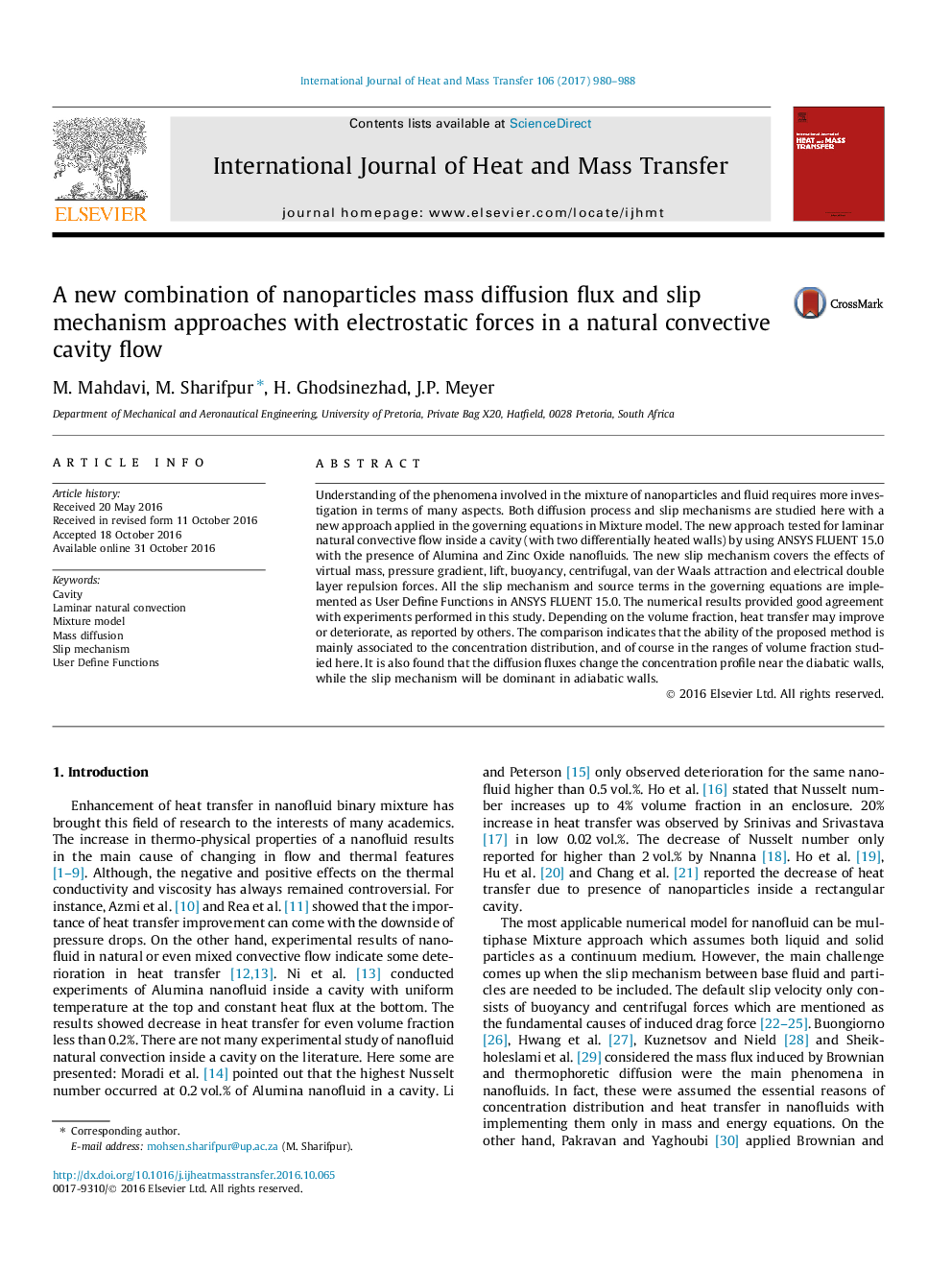| کد مقاله | کد نشریه | سال انتشار | مقاله انگلیسی | نسخه تمام متن |
|---|---|---|---|---|
| 4994824 | 1458036 | 2017 | 9 صفحه PDF | دانلود رایگان |

- Nanoparticles diffusion terms and other slip mechanisms were implemented for convective nanofluids.
- The simulation heat transfer results of the new approach were found in good agreement with experimental measurements.
- The nanoparticle concentration distribution inside the boundary layer is highly affected by the diffusion terms.
- The electrostatic forces can compete with bouncy force at the bottom of the cavity by increasing the volume fraction.
Understanding of the phenomena involved in the mixture of nanoparticles and fluid requires more investigation in terms of many aspects. Both diffusion process and slip mechanisms are studied here with a new approach applied in the governing equations in Mixture model. The new approach tested for laminar natural convective flow inside a cavity (with two differentially heated walls) by using ANSYS FLUENT 15.0 with the presence of Alumina and Zinc Oxide nanofluids. The new slip mechanism covers the effects of virtual mass, pressure gradient, lift, buoyancy, centrifugal, van der Waals attraction and electrical double layer repulsion forces. All the slip mechanism and source terms in the governing equations are implemented as User Define Functions in ANSYS FLUENT 15.0. The numerical results provided good agreement with experiments performed in this study. Depending on the volume fraction, heat transfer may improve or deteriorate, as reported by others. The comparison indicates that the ability of the proposed method is mainly associated to the concentration distribution, and of course in the ranges of volume fraction studied here. It is also found that the diffusion fluxes change the concentration profile near the diabatic walls, while the slip mechanism will be dominant in adiabatic walls.
Journal: International Journal of Heat and Mass Transfer - Volume 106, March 2017, Pages 980-988